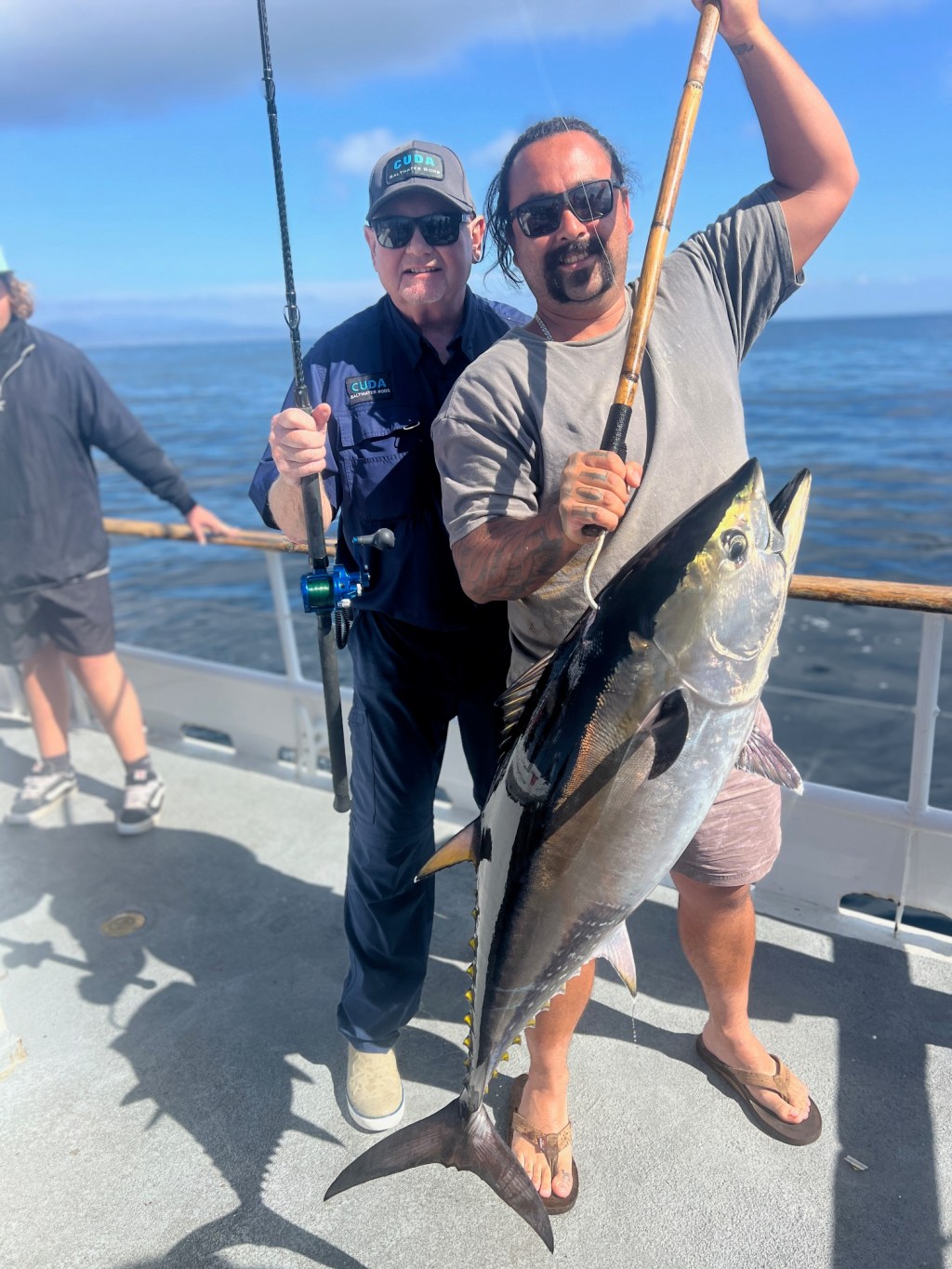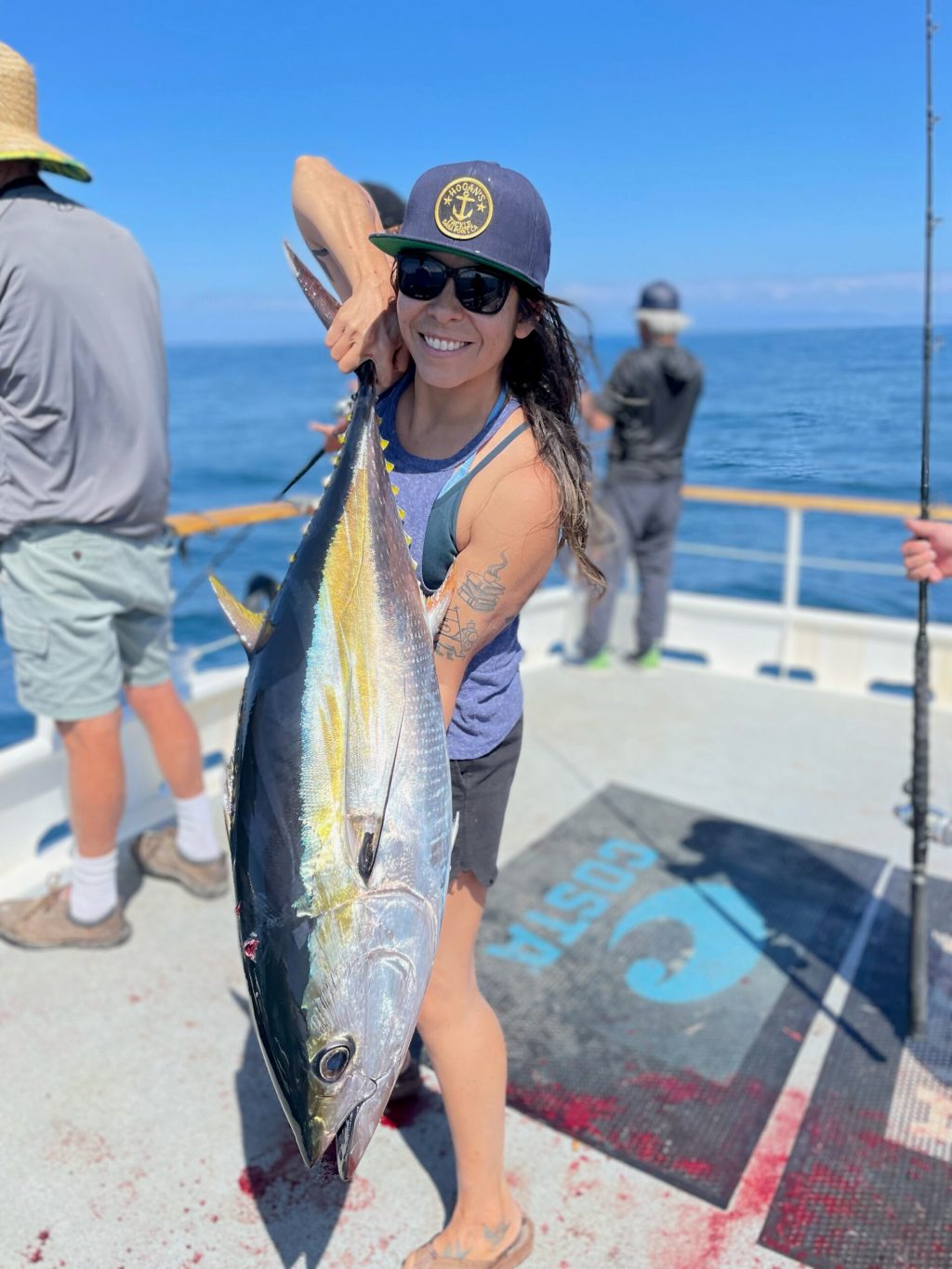Bluefin vs. Yellowfin Fishing Guide
Fishing for tuna is an exciting and challenging experience for any angler. However, when it comes to catching bluefin and yellowfin tuna, there are some key differences to keep in mind. In this guide, we’ll explore the differences between bluefin and yellowfin tuna, as well as some tips and tricks for catching these prized fish.
Bluefin Tuna
Bluefin tuna are known for their large size and powerful fighting abilities. They can grow up to 10 feet long and weigh over 1,000 pounds, making them one of the largest and most sought-after game fish in the world. Bluefin tuna are found in the Atlantic, Pacific, and Indian Oceans, and are known for their long migrations.
Characteristics of Bluefin Tuna
Bluefin tuna have a dark blue or black back and a silver belly. They also have a distinctive yellow fin on their tail, which is where they get their name. They are known for their torpedo-shaped bodies and powerful tails, which allow them to swim at speeds of up to 40 miles per hour.
Bluefin tuna are also known for their high-quality meat, which is prized by sushi chefs and can fetch high prices at fish markets. This makes them a popular target for commercial and recreational fishermen alike.

Best Time and Place to Catch Bluefin Tuna
Bluefin tuna can be found in the Atlantic Ocean from Maine to Brazil, as well as in the Mediterranean Sea. In the Pacific Ocean, they can be found from Alaska to Mexico and as far south as Australia. They are also found in the Indian Ocean, primarily in the waters off of Japan and Australia.
The best time to catch bluefin tuna varies depending on the location. In the Atlantic, the peak season is from June to October, while in the Pacific, it is from May to November. In the Mediterranean, the best time to catch bluefin tuna is from June to September.
Tips for Catching Bluefin Tuna
If you’re looking to catch bluefin tuna, here are some tips to keep in mind:
- Use heavy-duty equipment: Bluefin tuna are powerful fish, so you’ll need heavy-duty rods, reels, and line to handle them.
- Use live bait: Bluefin tuna are known for their preference for live bait, so be sure to have some on hand.
- Look for birds: Bluefin tuna often feed near the surface, so keep an eye out for birds diving into the water, as this can indicate the presence of tuna.
- Use chum: Chumming, or throwing bits of bait into the water, can attract bluefin tuna to your boat.
- Be patient: Bluefin tuna can be elusive and may require some patience to catch. Don’t give up if you don’t get a bite right away.
Yellowfin Tuna
Yellowfin tuna, also known as ahi tuna, are another highly prized game fish. They are slightly smaller than bluefin tuna, with an average size of 3-4 feet and a weight of 100-200 pounds. They are found in tropical and subtropical waters around the world, including the Atlantic, Pacific, and Indian Oceans.
Characteristics of Yellowfin Tuna
Yellowfin tuna have a metallic blue or green back and a silver belly. They also have a yellow fin on their tail, similar to bluefin tuna. However, the yellowfin tuna’s fin is longer and more pointed than the bluefin’s. They have a streamlined body and are known for their speed and agility.
Yellowfin tuna are also prized for their high-quality meat, which is often used in sushi and sashimi dishes.

Best Time and Place to Catch Yellowfin Tuna
Yellowfin tuna can be found in tropical and subtropical waters around the world, including the Gulf of Mexico, the Caribbean, and the waters off of Hawaii. They are also found in the Indian Ocean, primarily in the waters off of India and Sri Lanka.
The best time to catch yellowfin tuna varies depending on the location. In the Gulf of Mexico, the peak season is from April to October, while in the Caribbean, it is from May to September. In Hawaii, the best time to catch yellowfin tuna is from May to September.
Tips for Catching Yellowfin Tuna
If you’re looking to catch yellowfin tuna, here are some tips to keep in mind:
- Use lighter equipment: Yellowfin tuna are smaller than bluefin tuna, so you can use lighter rods, reels, and line to catch them.
- Use lures: Yellowfin tuna are known for their preference for lures, so be sure to have a variety of lures on hand.
- Look for floating debris: Yellowfin tuna often gather around floating debris, such as logs or seaweed, so keep an eye out for these areas.
- Use a fish finder: A fish finder can help you locate schools of yellowfin tuna, making it easier to catch them.
- Be prepared for a fight: Yellowfin tuna are known for their powerful fighting abilities, so be prepared for a challenging battle.
Dana Wharf Sportfishing
Dana Wharf Sportfishing, located in Dana Point, California, is a popular destination for anglers looking to catch bluefin and yellowfin tuna. They offer a variety of fishing trips, including half-day, full-day, and overnight trips, as well as private charters.
Dana Wharf Sportfishing is known for its experienced captains and crew, as well as its state-of-the-art boats and equipment. They also offer a variety of amenities, including a full-service tackle shop and a galley serving food and drinks.
Tuna Fishing Tips
Whether you’re fishing for bluefin or yellowfin tuna, here are some general tips to keep in mind:
- Use the right equipment: As mentioned earlier, you’ll need heavy-duty equipment for bluefin tuna and lighter equipment for yellowfin tuna.
- Use the right bait: Bluefin tuna prefer live bait, while yellowfin tuna prefer lures.
- Keep an eye on the weather: Tuna fishing is best on calm, sunny days. Check the weather forecast before heading out on your trip.
- Be patient: Tuna can be elusive and may require some patience to catch. Don’t get discouraged if you don’t get a bite right away.
- Follow the regulations: Be sure to follow all fishing regulations and size limits to ensure the sustainability of tuna populations.
Conclusion
In conclusion, bluefin and yellowfin tuna are two of the most prized game fish in the world. While they have some similarities, such as their preference for live bait and their high-quality meat, they also have some key differences, such as their size and preferred fishing techniques.
If you’re looking to catch bluefin or yellowfin tuna, be sure to use the tips and techniques outlined in this guide. And if you’re in the Dana Point area, be sure to check out Dana Wharf Sportfishing for an unforgettable tuna fishing experience. Happy fishing!
